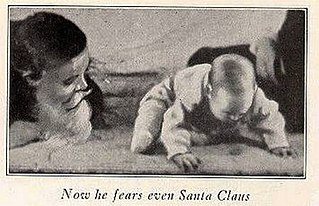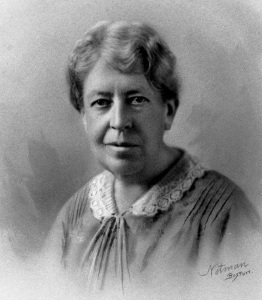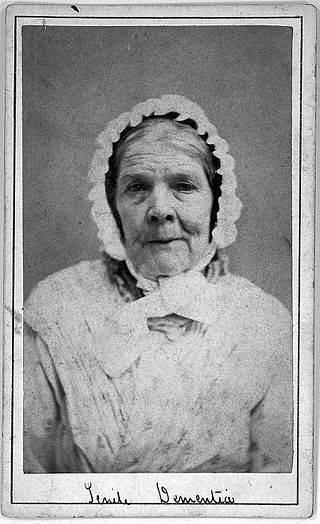Related Research Articles

Dementia praecox is a disused psychiatric diagnosis that originally designated a chronic, deteriorating psychotic disorder characterized by rapid cognitive disintegration, usually beginning in the late teens or early adulthood. Over the years, the term dementia praecox was gradually replaced by schizophrenia, which remains in current diagnostic use.

Alfred Binet, born Alfredo Binetti, was a French psychologist who invented the first practical IQ test, the Binet–Simon test. In 1904, the French Ministry of Education asked psychologist Alfred Binet to devise a method that would determine which students did not learn effectively from regular classroom instruction so they could be given remedial work. Along with his collaborator Théodore Simon, Binet published revisions of his test in 1908 and 1911, the last of which appeared just before his death.

Paul Eugen Bleuler was a Swiss psychiatrist and humanist most notable for his contributions to the understanding of mental illness. He coined several psychiatric terms including "schizophrenia", "schizoid", "autism", depth psychology and what Sigmund Freud called "Bleuler's happily chosen term ambivalence".

The Little Albert experiment was a study that mid-20th century psychologists interpret as evidence of classical conditioning in humans. The study is also claimed to be an example of stimulus generalization although reading the research report shows that fear did not generalize by color or tactile qualities. It was carried out by John B. Watson and his graduate student, Rosalie Rayner, at Johns Hopkins University. The results were first published in the February 1920 issue of the Journal of Experimental Psychology.
In psychology, the Asch conformity experiments or the Asch paradigm were a series of studies directed by Solomon Asch studying if and how individuals yielded to or defied a majority group and the effect of such influences on beliefs and opinions.

Mary Whiton Calkins was an American philosopher and psychologist, whose work informed theory and research of memory, dreams and the self. In 1903, Calkins was the twelfth in a listing of fifty psychologists with the most merit, chosen by her peers. Calkins was refused a Ph.D. by Harvard University because of her gender.
Stereotype threat is a situational predicament in which people are or feel themselves to be at risk of conforming to stereotypes about their social group. It is theorized to be a contributing factor to long-standing racial and gender gaps in academic performance. Since its introduction into the academic literature, stereotype threat has become one of the most widely studied topics in the field of social psychology.

David L. Rosenhan was an American psychologist. He is best known for the Rosenhan experiment, a study challenging the validity of psychiatry diagnoses.

Age-related memory loss, sometimes described as "normal aging", is qualitatively different from memory loss associated with types of dementia such as Alzheimer's disease, and is believed to have a different brain mechanism.
Cognitive slippage is considered a milder and sub-clinical presentation of formal thought disorder observed via unusual use of language. It is often identified when a person attempts to make tangential connections between concepts that are not immediately understandable to listeners. When observed repeatedly, this is taken as evidence for unusual, maladaptive or illogical thinking patterns.
The scientist–practitioner model, also called the Boulder Model, is a training model for graduate programs that provide applied psychologists with a foundation in research and scientific practice. It was initially developed to guide clinical psychology graduate programs accredited by the American Psychological Association (APA).

David Shakow (1901–1981) was an American psychologist. He is perhaps best known for his development of the Scientist-Practitioner Model of graduate training for clinical psychologists, adopted by the American Psychological Association in 1949.
Priming is the idea that exposure to one stimulus may influence a response to a subsequent stimulus, without conscious guidance or intention. The priming effect refers to the positive or negative effect of a rapidly presented stimulus on the processing of a second stimulus that appears shortly after. Generally speaking, the generation of priming effect depends on the existence of some positive or negative relationship between priming and target stimuli. For example, the word nurse might be recognized more quickly following the word doctor than following the word bread. Priming can be perceptual, associative, repetitive, positive, negative, affective, semantic, or conceptual. Priming effects involve word recognition, semantic processing, attention, unconscious processing, and many other issues, and are related to differences in various writing systems. Research, however, has yet to firmly establish the duration of priming effects, yet their onset can be almost instantaneous.
In psychology, implicit memory is one of the two main types of long-term human memory. It is acquired and used unconsciously, and can affect thoughts and behaviours. One of its most common forms is procedural memory, which allows people to perform certain tasks without conscious awareness of these previous experiences; for example, remembering how to tie one's shoes or ride a bicycle without consciously thinking about those activities.
Caregiver syndrome or caregiver stress is a condition that strongly manifests exhaustion, anger, rage, or guilt resulting from unrelieved caring for a chronically ill patient. This condition is not listed in the United States' Diagnostic and Statistical Manual of Mental Disorders, although the term is often used by many healthcare professionals in that country. The equivalent used in many other countries, the ICD-11, does include the condition.
The encoding specificity principle is the general principle that matching the encoding contexts of information at recall assists in the retrieval of episodic memories. It provides a framework for understanding how the conditions present while encoding information relate to memory and recall of that information.
In psychology, confabulation is a memory error defined as the production of fabricated, distorted, or misinterpreted memories about oneself or the world. It is generally associated with certain types of brain damage or a specific subset of dementias. While still an area of ongoing research, the basal forebrain is implicated in the phenomenon of confabulation. People who confabulate present with incorrect memories ranging from subtle inaccuracies to surreal fabrications, and may include confusion or distortion in the temporal framing of memories. In general, they are very confident about their recollections, even when challenged with contradictory evidence.

Elmer Ernest Southard was an American neuropsychiatrist, neuropathologist, professor and author. Born in Boston, Massachusetts, Southard lived in the city for nearly his entire life. He attended Boston Latin School and completed his education at Harvard University. At Harvard, Southard distinguished himself as a chess player. After briefly studying in Germany, he returned to the United States as a pathologist at Danvers State Hospital. Southard held academic appointments at Harvard University and its medical school.
The McGill Picture Anomaly Test (MPAT) is a scientific test that was created by Donald O. Hebb of McGill University and N.W. Morton that assists in testing visual intelligence as well as understanding human behavior. The test includes a series of pictures that each show a typical situation but have something out of place in the photo and provides evidence that supports the idea that the right temporal lobe is involved in visual recognition. When patients with lesions to the right temporal lobe were given the MPAT, they were unable to point to the absurdity in the photo and perceived that nothing was out of place. The test is used to measure a cultural comprehension which allows for a basis to then estimate an individual's intelligence. However, this test alone is not enough to accurately give a single score or representation of a person's overall intelligence. The MPAT is not meant to be used across a variety of populations due to the fact that the social norms of varied populations can be tremendously different, causing the results of the test to be indeterminate.
Harriet Babcock (1877–1952) was an American psychologist who specialized in abnormal psychology research in addition to developing measures and theories of intelligence. After her doctoral work at Columbia University, she worked primarily in the Department of Psychology at New York University, and acted as a consultant to the New York City Guidance Bureau. Babcock developed multiple intelligence tests evaluating mental deterioration and efficiency.
References
- ↑ "Grace Kent". .webster.edu. 1973-09-18. Retrieved 2013-10-04.
- ↑ Shakow, David (1974-07-01). "Grace Helen Kent". Journal of the History of the Behavioral Sciences. 10 (3): 275–280. doi:10.1002/1520-6696(197407)10:3<275::aid-jhbs2300100302>3.0.co;2-j. ISSN 1520-6696. PMID 11609222.
- ↑ Shakow, D., & Jellinek, E. (1965). "Composite index of the Kent-Rosanoff Free Association Test". Journal of Abnormal Psychology. 70 (6): 403–404. doi:10.1037/h0022749. PMID 5846423.
{{cite journal}}: CS1 maint: multiple names: authors list (link) - ↑ Kent, Grace Hellen (1916). "A graded series of geometrical puzzles". Journal of Experimental Psychology. 1 (1): 40–50. doi:10.1037/h0068494. hdl: 10192/28940 .
- ↑ Kent, Grace Hellen (1911). "Experiments on habit formation in dementia praecox". Psychological Review. 18 (6): 375–410. doi:10.1037/h0070005.